Ruckus Wireless ZoneFlex T710 Handleiding
Ruckus Wireless
Access point
ZoneFlex T710
Bekijk gratis de handleiding van Ruckus Wireless ZoneFlex T710 (4 pagina’s), behorend tot de categorie Access point. Deze gids werd als nuttig beoordeeld door 75 mensen en kreeg gemiddeld 5.0 sterren uit 38 reviews. Heb je een vraag over Ruckus Wireless ZoneFlex T710 of wil je andere gebruikers van dit product iets vragen? Stel een vraag
Pagina 1/4

Copyright © 2016 Ruckus Wireless, Inc.
Published August 2016, Part Number 800-70938-001 Rev E
Page 1 of 4
T710 Access Point
Quick Setup Guide
This Mounting Guide provides step-by-step instructions on how to
field-install the Ruckus Wireless T710 access point (AP).
For detailed information on planning the installation, performing a site
survey, and operating the T710, refer to the ZoneFlex Outdoor Access
Point User Guide, available at https://support.ruckuswireless.com.
WARNING: Only trained and qualified personnel should be allowed to
install, replace, or service this equipment.
WARNING: Installation of this equipment must comply with local and
national electrical codes.
CAUTION: Make sure that you form a 80mm - 130mm (3”-5”) drip
loop in any cable that is attached to the AP or the building. This will
prevent water from running along the cable and entering the AP or the
building where the cable terminates.
CAUTION: Be sure that grounding is available and that it meets local
and national electrical codes. For additional lightning protection, use
lightning rods and lightning arrestors.
CAUTION: Make sure that proper lightning surge protection
precautions are taken according to local electrical code.
WARNING: Ruckus Wireless strongly recommends that you wear eye
protection before mounting the T710.
T HIS GUIDE IN OTHER LANGUAGES
请从以下网站获得该指南的简体中文版
https://support.ruckuswireless.com.
Vous trouverez la version française de ce guide à l'adresse suivante
https://support.ruckuswireless.com.
こ の ガ イ ド の⽇本語版は https://support.ruckuswireless.com
で ご 覧 く だ さ い。
이 가이드의 한국어 웹 버전은 사이트
(https://support.ruckuswireless.com) .에서 확인하시기 바랍니다
Veja a versão em português (Brasil) deste guia em
https://support.ruckuswireless.com.
Puede ver la versión en español (América Latina) de esta guía en
https://support.ruckuswireless.com.
BEFORE YOU BEGIN
Before deploying your Ruckus Wireless T710, verify that all items listed
in Package Contents are included in the package. If any item is
damaged or missing, notify your authorized Ruckus Wireless sales
representative. Also, make sure that you have the required hardware
and tools.
REQUIRED HARDWARE AND TOOLS
• Customer-supplied outdoor-rated three-wire (1-2mm2 or 14-
18AWG) AC cable
• 1/2” (13mm) flat-blade screwdriver or equivalent
• No. 2 Phillips screwdriver
• Small flat-blade screwdriver
• Torque wrench or torque screwdriver with sockets
• Long-nose pliers
• Electrical wire stripping and terminal crimping pliers
• Pipe or pole --OR-- a sturdy flat surface
• Electric drill with drill bits and customer-supplied wall anchors, flat
washers, and hex nuts for flat-surface mount
• Four factory-supplied 1/2” (12.7mm) wide stainless steel
adjustable clamps, 2.5” (63.5mm) diameter, for main mounting
bracket on smaller poles
• Ruler
PACKAGE CONTENTS
A complete T710 field installation package includes all of the items
listed below (see Figure 1for illustrations):
• T710 Access Point (A)
• M25 data cable gland extender (B)
• Three M25 data cable glands (C)
• Outdoor AP Mounting Bracket (D), consists of:
• Mounting bracket
• U-joint bracket
• Linkage bracket
• AP bracket
• AC Power Cable End Connector (E)
• Cable Gland Extender Flat Gasket (F)
• Safety cable kit (G)
• One ground wire with lug (H)
• Service Level Agreement/Limited Warranty Statement
• Regulatory Statement
• Ruckus Wireless AP Getting Started Guide
• Declaration of Conformity
• This Quick Setup Guide
Figure 1: Package Contents
S TEP 1: CONNECTING AND SEALING THE RJ-45
CABLES
The T710 may use zero, or one or two RJ-45 cables, one for Ethernet
when configured as a Root AP (RAP), and another when the T710 is
supplying PoE out to a peripheral device, such as a small cell or micro
cell radio. When the T710 uses RJ-45 cables, connect and seal the
cables using the M25 data cable glands as shown in Figure 3.
WARNING: Do not use any PoE injector not tested and approved by
Ruckus Wireless to power the T710 Access Point.
WARNING: Do not plug PoE IN power into the PoE OUT port. See
Figure 2.
WARNING: If using PoE OUT, it is MANDATORY to use the custom
Ruckus supplied 60W PoE injector (part #902-0180-XX00), or to use
AC power.
WARNING: If using a PoE switch to supply power to the T710, 30W
MUST be reserved for the T710 on the switch. Failure to ensure a
30W supply may result in unpredictable operation of the access point.
Additionally, if using a PoE switch, the T710’s PoE OUT port cannot be
used to power additional devices.
Figure 2: PoE IN and PoE OUT ports
1Feed the end of the cable through the sealing nut, rubber O-ring,
clamping ring assembly and cable gland base as shown in Figure
3.
CAUTION! The minimum software revision for the T710
is ZoneFlex (ZF) 9.13 or later, or SmartZone (SZ) 3.4 or
later.
DO NOT CONNECT THE T710 TO A RUCKUS
WIRELESS ZONEDIRECTOR RUNNING 9.12.2 OR
EARLIER.

Copyright © 2016 Ruckus Wireless, Inc.
Published August 2016, Part Number 800-70938-001 Rev E
Page 2 of 4
Figure 3: RJ-45 cable and cable gland assembly
2Use a wide flat-blade screwdriver to remove the required (RESET/
PoE OUT or PoE IN) blanking cap from the T710.
3Connect the cable to the Ethernet port in the T710.
4Tighten the cable gland base into the T710 chassis to 7 N.m or
62 in-lbs.
5Wrap the clamping ring assembly around the rubber O-ring. Make
sure that the clamping ring assembly fully encloses the rubber O-
ring.
6Seat the clamping ring assembly and rubber O-ring in the cable
gland base.
7Hand-tighten the sealing nut.
S TEP 1A: CONNECTING THE SFP OPTIC MODULE TO
THE FIBER PORT
To connect to fiber backhaul, plug an SFP Optic module into the Fiber
port. The SFP module is hot-swappable and can be removed with
fingers or simple tools.
NOTE: Recommended modules specified to work with this system
are: Finisar GPON FTGN2117P2TUN, Finisar EPON
FTEN2217P1CUN-BC, Finisar 1000BaseLX FTLF1318P3BTL, Xavi
XO-3901 GPON ONT.
NOTE: The fiber cable must be a single diameter cable, not a zipcord.
Figure 4: SFP module cable gland assembly
S TEP 2: ATTACHING THE U-JOINT BRACKET TO THE
MOUNTING BRACKET
1Position the U-joint bracket on the mounting bracket.
NOTE: Mount the U-joint bracket in any direction on the mounting
bracket, preferably to allow AP azimuth adjustments. Then the AP
bracket allows AP elevation adjustments.
Figure 5: U-joint bracket attached horizontally to the mounting bracket
2Use four 1/4-28 bolt and washer sets (A) to mount the U-joint
bracket (B) to the mounting bracket (C). Tighten the bolts to 9.5
N.m (7 ft-lbs).
3Continue with Step 3a: Attaching the Mounting Bracket to a
Flat Surface or Step 3b: Attaching the Mounting Bracket to a
Metal Pole.
S TEP 3A: ATTACHING THE TO MOUNTING BRACKET A
FLAT SURFACE
1Place the mounting bracket at the location on the flat surface
where you want to mount the AP. Use the holes on the mounting
bracket as a template to mark the locations of the mounting
holes.
Figure 6: Mounting bracket flat surface holes
2Remove the mounting bracket from the flat surface.
3Drill holes required for the mounting hardware.
NOTE: The hardware required for mounting to a wall are not included
in the mounting kit.
4Attach the mounting bracket to the flat surface using the
mounting hardware.
5Using the mounting hardware instructions, tighten the hardware to
secure the mounting bracket.
6Continue with Step 4: Mounting the Linkage Bracket to the U-
Joint Bracket.
S TEP 3B: ATTACHING THE MOUNTING BRACKET TO A
METAL POLE
1Insert the open end of one steel clamp into the upper two slots on
the mounting bracket.
2Take the other steel clamp and insert it into the lower two slots on
the mounting bracket.
NOTE: The clamps can be daisy-chained together to
accommodate larger poles.
3Use the clamps to attach the mounting bracket to the pole.
Tighten the clamps to 3 N.m or 27 in-lbs, or per manufacturer’s
specifications.
Figure 7: Attaching the mounting bracket to a vertical pole
4Continue with Step 4: Mounting the Linkage Bracket to the U-
Joint Bracket.
S TEP 4: MOUNTING THE L BINKAGE RACKET TO THE
U-JOINT BRACKET
The linkage bracket attaches to the U-joint bracket using an M8 bolt
and washer set. The linkage bracket is symmetrical, and either end
can be attached to the U-joint bracket.
NOTE: Make sure that linkage bracket is installed with its serrated
external-tooth lock washer on the inside of the U-joint bracket
flanges. This ensures that the azimuth adjustment does not
change.
1Loosely assemble the linkage bracket (A), the U-joint bracket (C),
one serrated external-tooth lock washer (B), and one M8 bolt
and washer set (D).
Figure 8: Attaching the linkage bracket to the U-joint bracket
Cable gland base
Clamping ring assembly
Rubber O-ring
Sealing nut
C
B
A
A
C
B
D

Copyright © 2016 Ruckus Wireless, Inc.
Published August 2016, Part Number 800-70938-001 Rev E
Page 3 of 4
2Set the azimuth required by the AP.
3Tighten the M8 bolt to 13.6 N-m (10 ft-lbs).
4Continue with Step 5: Attach the AP bracket to the linkage
bracket.
S TEP 5: ATTACH THE AP BRACKET TO THE LINKAGE
BRACKET
Attach the AP bracket to the linkage bracket using the included bolt,
nut, lock washer, flat washer, serrated external-tooth washer shown in
Figure 9.
The AP bracket attaches to the linkage bracket using an M8 bolt and
washer set. The linkage bracket is symmetrical, and either end can be
attached to the AP bracket.
NOTE: Make sure that linkage bracket is installed with its serrated
external-tooth lock washer on the inside of the AP bracket flanges.
This ensures that the elevation adjustment does not change.
1As described in Step 4: Mounting the Linkage Bracket to the
U-Joint Bracket, loosely assemble the AP bracket (shown in
Figure 10), the linkage bracket (A in Figure 8), the second
serrated external-tooth lock washer (B in Figure 8), and the
second M8 bolt and washer set (D in Figure 8).
Figure 9: Attach the linkage bracket to the AP bracket
S TEP 6: ATTACHING THE AP BRACKET TO THE
ACCESS POINT
1Place the AP bracket onto the back side of the AP so that the four
larger screw holes on the bracket align with the four screw holes
on the AP. Make sure that the end of the AP bracket with the
hoisting loop is on the same side as the AP PoE IN port.
Figure 10: Attaching the AP bracket to the AP
2Use four 0.5-inch x 0.250-28 hex bolts with split lock and flat
washer sets to mount the AP bracket to the AP. Tighten the bolts
to 2.5-3.0 N.m or 22-27 in-lbs.
CAUTION: Make sure that the screws are no longer than 0.5 inch.
If a screw is longer than 0.5 inch, it can damage the AP chassis.
3If required, suspend the AP by attaching a carabiner to the
hoisting loop on the AP bracket.
NOTE: This kit may include extra screws, nuts and washers. You
may use the extras wherever required.
4Continue with Step 7: Set the Elevation and Tighten Elevation
Bolt.
S -TEP 7: SET THE ELEVATION AND T EIGHTEN LEVA
TION BOLT
1Set the elevation required by the AP.
2Tighten the M8 bolt to 13.6 N-m (10 ft-lbs).
3Continue with Step 8: Powering the AP with AC.
S TEP 8: POWERING THE AP WITH AC
1Separate the AC cable connector parts by unscrewing the boot
from the cable gland and the cable gland from the connector
housing.
2Feed the end of the AC cable through the boot and cable gland.
3Strip the AC cable as shown.
4Insert the stripped part of the conductors into the appropriate
terminals on the connector housing. The conductors are color-
coded and must be connected to the appropriate terminals as
shown in Figure 11.
Typical AC wire colors:
- (Earth Ground): Green (US), Green/Yellow (EU)
- 1 (Neutral/Return): White or Gray (US), Blue (EU)
- 2 (Line/Hot): Black (US), Brown (EU)
- 3 (not used)
NOTE: The color coding of wire conductors varies by region. Before
completing this step, check your local wiring standards for guidance.
5Using a small screwdriver, tighten the small screws around the
connector housing to fix the connector pins into the terminals.
6Mate the cable gland with the connector housing, and then hand-
tighten.
Figure 11: Assembling the AC power connector
Two different-sized grommets are supplied in the AC connector
assembly kit. Use the grommet that is appropriate to the diameter
of the AC cable that you are using.
7Mate the boot with the cable gland, and then hand-tighten to seal.
8Connect the AC cord connector that you have assembled to the
AC power socket on the AP.
9Connect the AC cord to an AC power source.
36mm or 1.42in (max)
9mm or 0.35in (max)
1
3
2
Earth Ground
Neutral/Return
Line/Hot
(not used)
1
3
2
Wire Stripping
(Not Actual Size)
Product specificaties
| Merk: | Ruckus Wireless |
| Categorie: | Access point |
| Model: | ZoneFlex T710 |
| Kleur van het product: | Wit |
| Gewicht: | 2950 g |
| Breedte: | 241 mm |
| Diepte: | 317 mm |
| Hoogte: | 95 mm |
| Internationale veiligheidscode (IP): | IP67 |
| LED-indicatoren: | Ja |
| Plaatsing: | Ceiling, Table, Wall |
| Frequentieband: | 5 GHz |
| Aantal Ethernet LAN (RJ-45)-poorten: | 2 |
| Bevestigingsmogelijkheid voor kabelslot: | Ja |
| Kabelslot sleuf type: | Kensington |
| Vermogensverbruik (max): | 25 W |
| MIMO: | Ja |
| Modulatie: | DPSK |
| Ethernet LAN, data-overdrachtsnelheden: | 10,100,1000 Mbit/s |
| Netwerkstandaard: | IEEE 802.11a, IEEE 802.11ac, IEEE 802.11b, IEEE 802.11g, IEEE 802.11n |
| Ondersteunde beveiligingsalgoritmen: | WPA-PSK, WPA-TKIP, WPA2-AES |
| Soort antenne: | Intern |
| Antennas quantity: | 4 |
| Antenne versterkingsniveau (max): | 8 dBi |
| Aantal gebruikers: | 512 gebruiker(s) |
| Intern: | Ja |
| Draadloos LAN data-overdrachtsnelheid (max): | 1733 Mbit/s |
| Web-gebaseerd management: | Ja |
| MIMO-type: | Multi User MIMO |
| Maximale overdrachtssnelheid van gegevens: | 1733 Mbit/s |
| 2,4 GHz: | Ja |
| 5 GHz: | Ja |
| Kanaalbandbreedte: | 80 MHz |
| Quality of Service (QoS): | Ja |
| Fit AP-modusfuncties: | Hotspot 2.0 |
| Adaptieve bandbreedtebeheer: | Ja |
| Service Set Identifier (SSID) functies: | Hidden SSID |
| IPv4- & IPv6-functies: | IPv4/IPv6 access-control list (ACL) |
| Power over Ethernet (PoE): | Ja |
| Antennefuncties: | Ingebouwde antenne |
| Aantal kanalen: | 3 kanalen |
| Bandbreedte: | 5 GHz |
| Max WLAN Connections: | 512 |
| Draadloze indringerdetectiesysteem (WIDS): | Ja |
| Bedrijfstemperatuur (T-T): | -40 - 65 °C |
| Relatieve vochtigheid in bedrijf (V-V): | 0 - 95 procent |
| Aantal SSID-ondersteuningen: | 31 |
Heb je hulp nodig?
Als je hulp nodig hebt met Ruckus Wireless ZoneFlex T710 stel dan hieronder een vraag en andere gebruikers zullen je antwoorden
Handleiding Access point Ruckus Wireless

20 December 2023

20 December 2023

20 December 2023

20 December 2023

20 December 2023

20 December 2023

20 December 2023

20 December 2023

20 December 2023

20 December 2023
Handleiding Access point
- AVM
- LevelOne
- Extron
- Hercules
- Grandstream
- StarTech.com
- V7
- EQ3
- Netgear
- HP
- Advantech
- Techly
- Syscom
- Zebra
- Insteon
Nieuwste handleidingen voor Access point
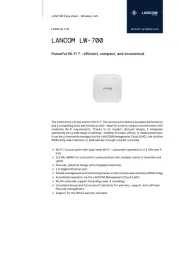
5 Augustus 2025

5 Augustus 2025

5 Augustus 2025
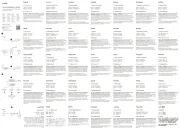
5 Augustus 2025
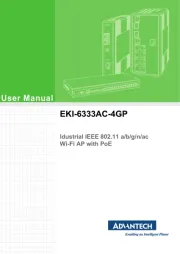
29 Juli 2025
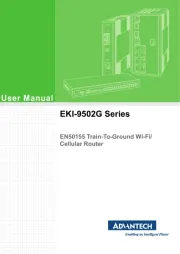
29 Juli 2025
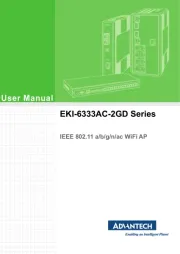
29 Juli 2025
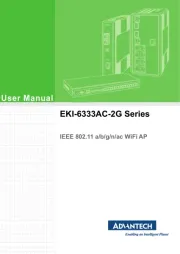
29 Juli 2025
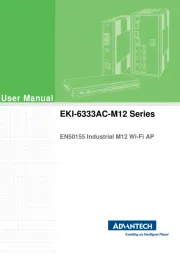
29 Juli 2025
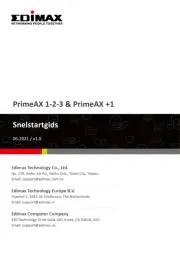
28 Juli 2025